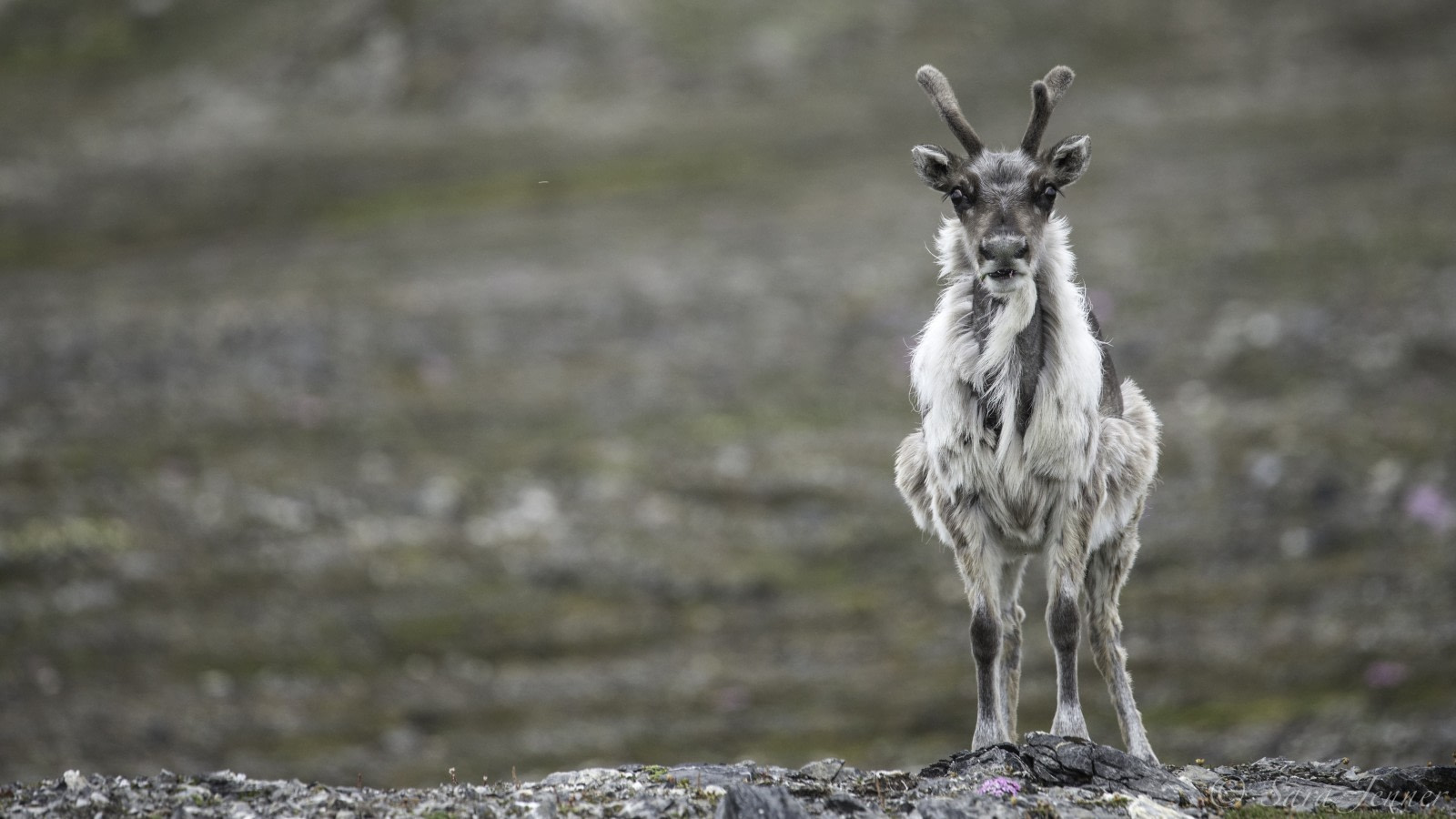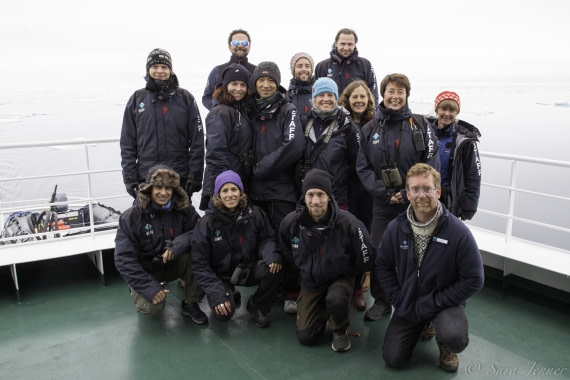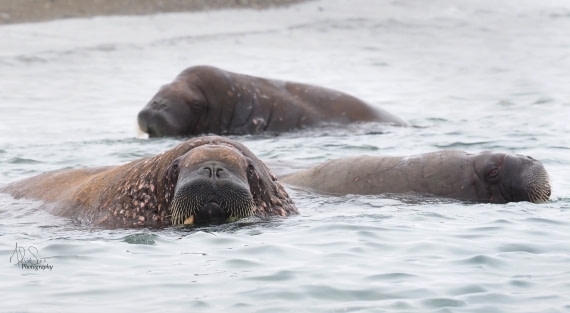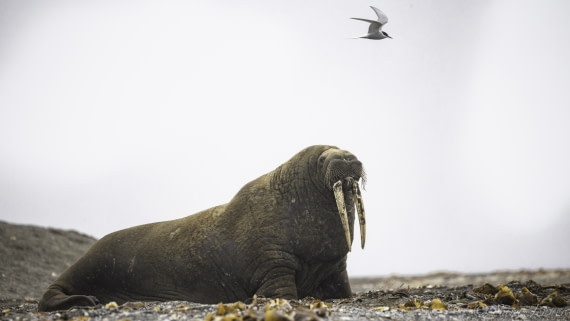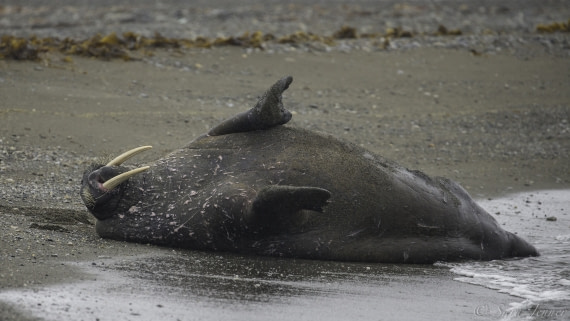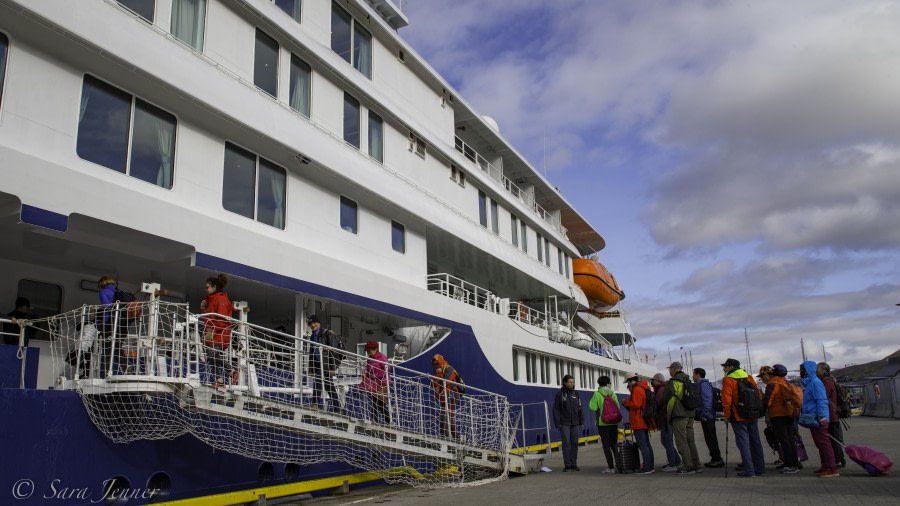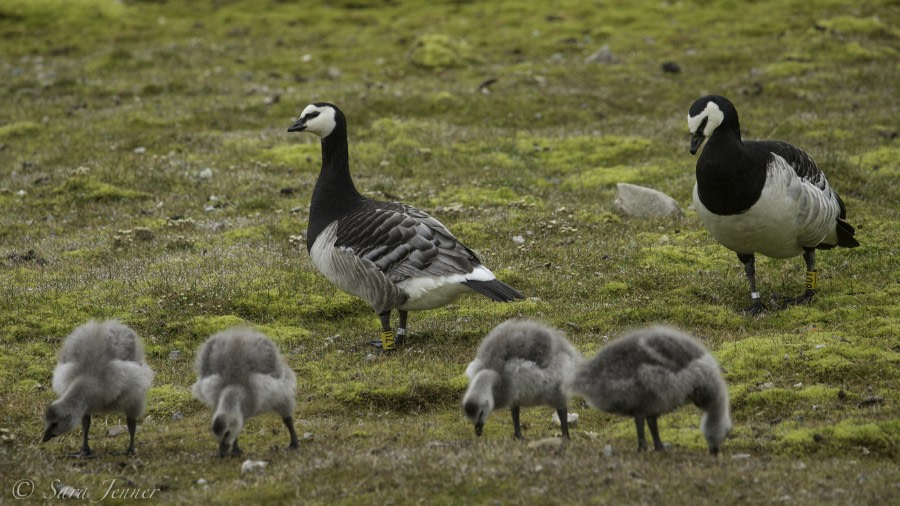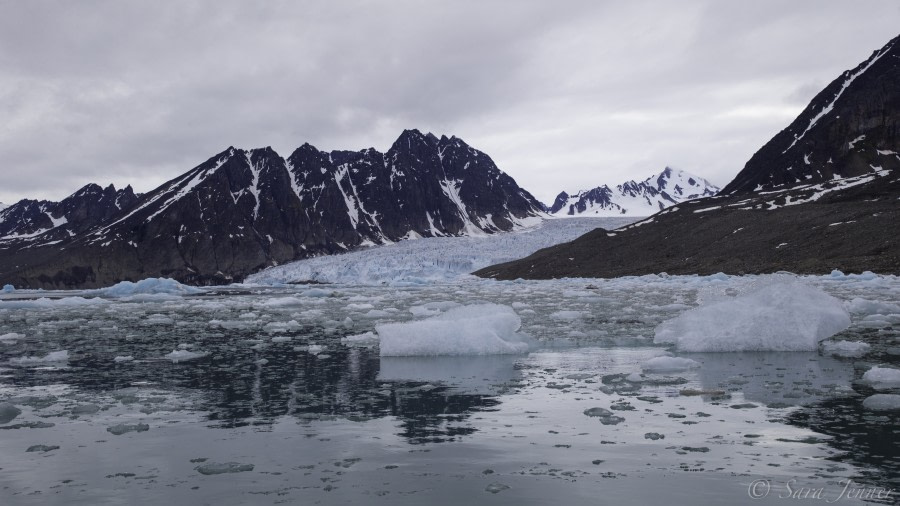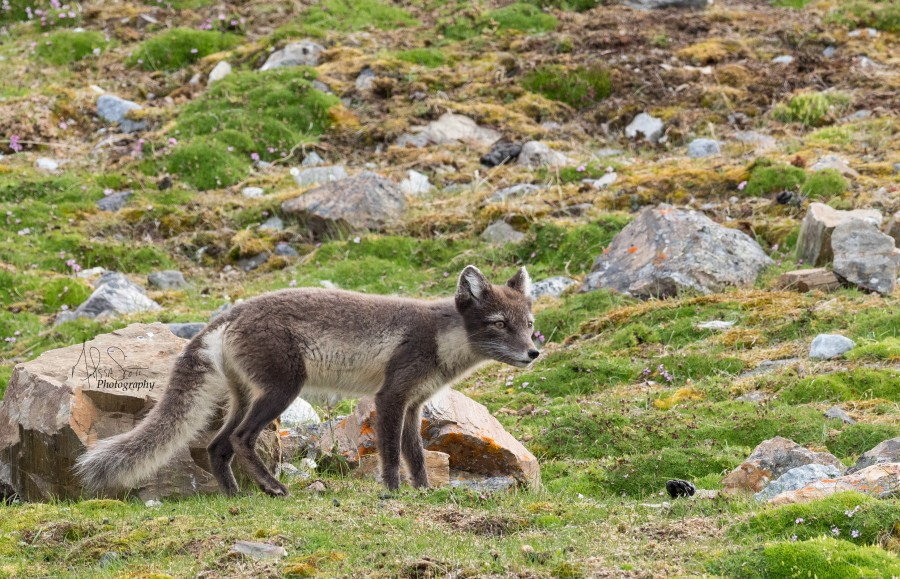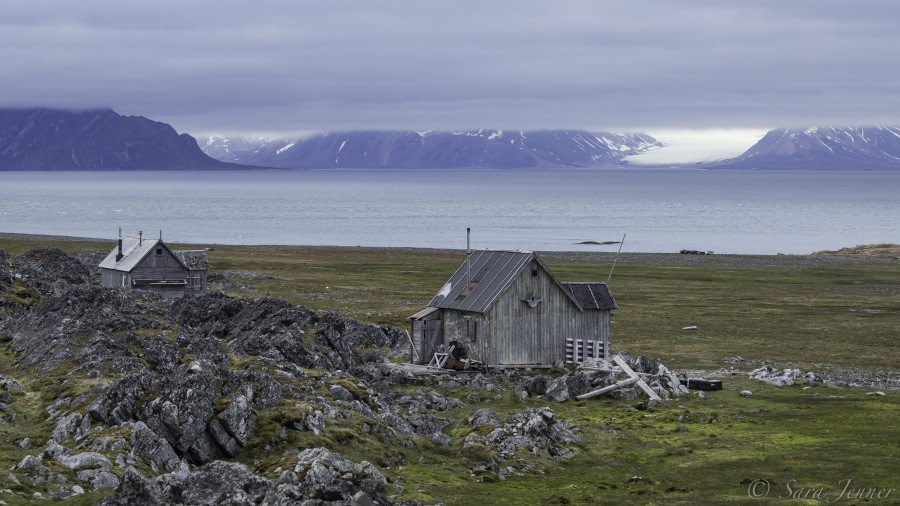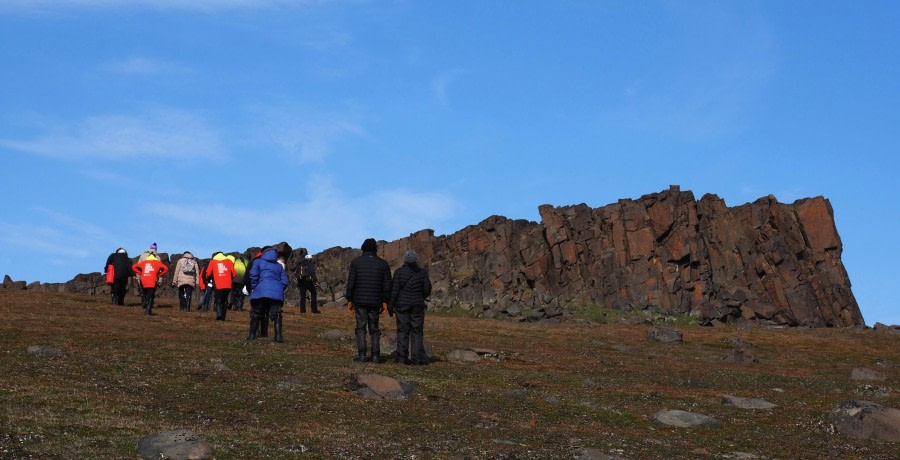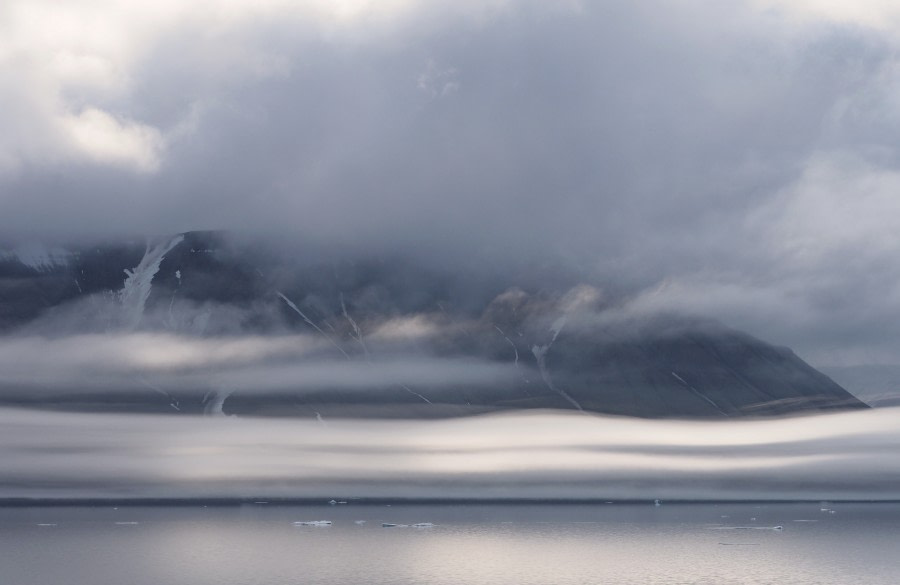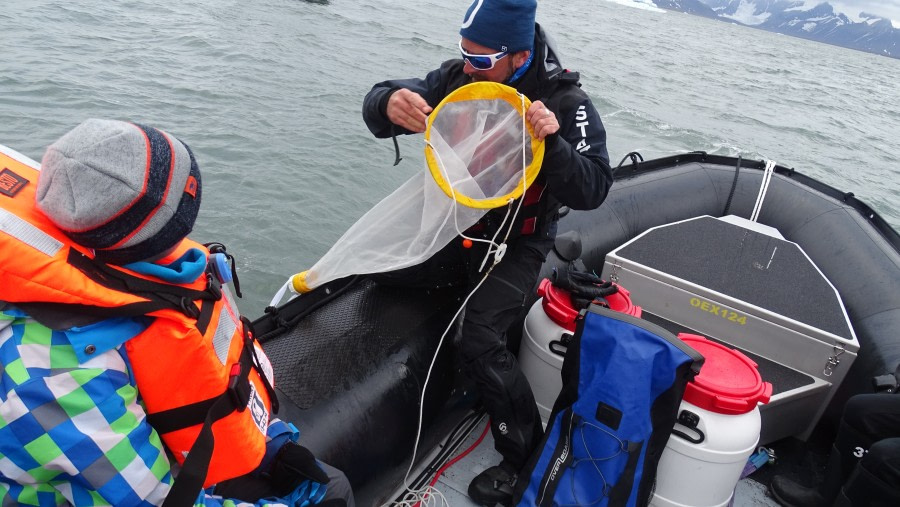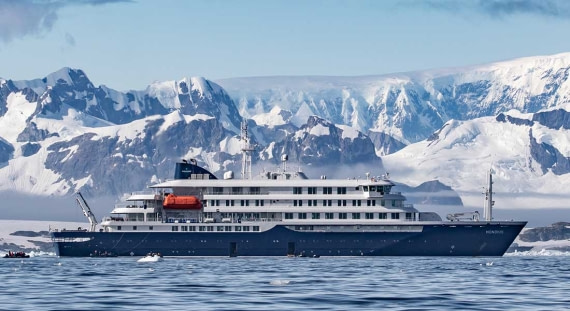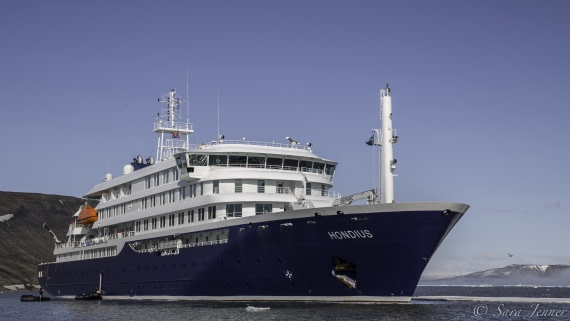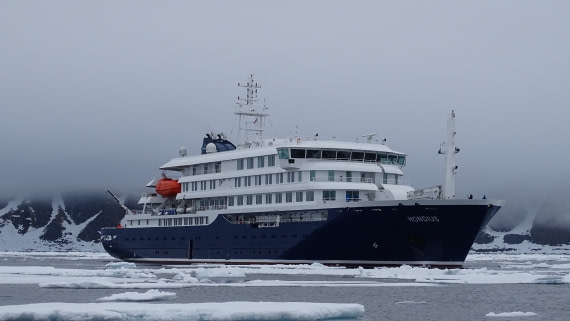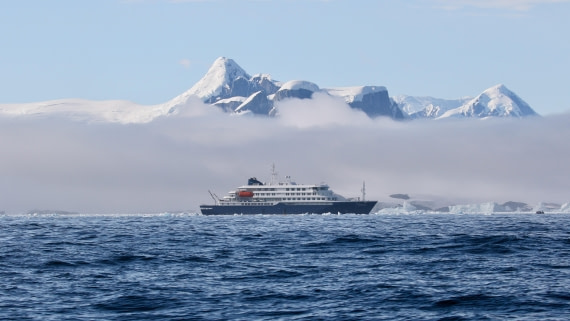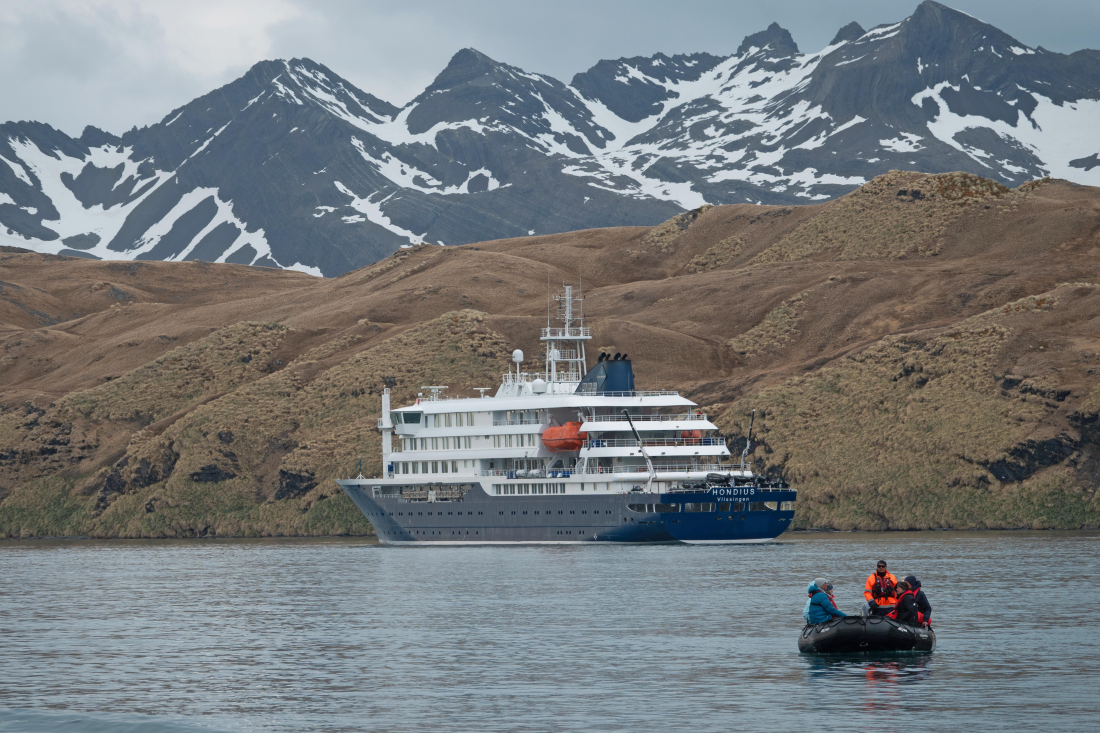| Fecha: |
16.07.2019 |
| Posición: |
79°36'.4 N, 012°43'.9 E |
| Viento: |
SW3 |
| Clima: |
nublado |
| Temperatura del Aire: |
+4 |
Nos despertamos en los tranquilos mares de Liftefjord con una vista general del cementerio de icebergs. El cielo estaba nublado y la temperatura era cálida. A medida que nos acercábamos a nuestro lugar de desembarco designado en Texas Bar, nos encontramos con hermosos trozos de bergy y growlers que reflejaban la luz azul del sol de la mañana que se colaba entre las nubes. El equipo del Staff empezó antes para explorar la línea de la costa y eventualmente las colinas, ya que nuestro plan era hacer una excursión a terrenos más altos para disfrutar de las maravillosas vistas que ofrecía esta bahía.
Después de desayunar, subimos a las zodiacs y nos dirigimos a la orilla en dos lugares diferentes. En el primero, un grupo inició una caminata más larga que ascendía unos 200 metros sobre el nivel del mar, hasta llegar a un mirador desde donde podíamos ver Monacobreen, el glaciar al que nos dirigiríamos para nuestra excursión de la tarde.
El segundo lugar estaba destinado a dos caminatas diferentes, una de longitud media y la segunda un paseo cerca de la pequeña cabaña que da nombre a este lugar. Texas Bar era una cabaña de tramperos, construida en 1929 y utilizada durante un par de décadas antes de que la caza y la captura quedaran obsoletas en estas regiones. En la actualidad, este refugio pertenece al Sysellmannen (Gobierno de Svalbard y fuerzas de seguridad de Beaurou), y se utiliza para la logística y, ocasionalmente, por los lugareños de Longyearbyen durante la primavera en viajes en moto de nieve. En las caminatas, pudimos ver Skuas, Kittywakes, Escribano nivales y otros amigos emplumados. Cuando todos los grupos de senderismo llegaron al embarcadero de Texas, pudimos disfrutar de una zambullida polar Algunos fuimos lo bastante valientes para sumergirnos en las gélidas aguas del océano Ártico, para salir revigorizados y definitivamente listos para una ducha caliente y el almuerzo. Los conductores de las zodiacs nos llevaron de vuelta a Hondius, donde nos esperaba el equipo del hotel. Por la tarde, hacia las 14:30, salimos de expedición en un crucero en zodiac. Bien abrigados, subimos a los barcos para explorar el hielo alrededor de Monacobreen. Las increíbles esculturas de hielo, el brillo del hielo y las rígidas paredes de hielo de la parte delantera del glaciar nos proporcionaron un marco perfecto para las miles de fotos que tomamos en este lugar. Cuando estábamos llegando al final de la excursión, el personal de la expedición avistó algunas focas Focas barbudas y focas comunes nadaban entre el hielo y, finalmente, una foca barbuda se subió a un témpano de hielo. Parecía posar para algunas fotos mientras nos acercábamos en silencio. El equipo de expedición nos recordó que debíamos mantener el volumen bajo, ya que estas focas son asustadizas y temen cualquier sonido. Los motores de los barcos se apagaron y disfrutamos de unos minutos de silencio mientras observábamos a la foca descansando. Algunos patos de Eider sobrevolaron nuestras cabezas en parejas, gaviotas tridáctilas se alimentaban frente a la cara del glaciar y araos de Brünich flotaban en las inmediaciones. Tras regresar al barco, y mientras nos entreteníamos y educábamos en nuestro habitual recuento diario, ¡aparecieron las ballenas! Un par de Rorcuales comunes, una Yubarta y un Rorcual aliblanco se alimentaban en la entrada de la bahía de Liftefjord. Los oficiales del puente maniobraron lentamente entre las ballenas para no molestarlas mientras se alimentaban cerca del barco. La cena se sirvió a las 19:30, y pensamos que nuestro emocionante día por fin había llegado a su fin, pero nos esperaba otra sorpresa. Mientras cenábamos, nuestro experimentado personal avistó Osos polares Cuando la cena tocaba a su fin, se anunció que una madre y un osezno habían sido vistos en la ladera de las montañas que conducen a un punto en el lado este de la entrada de la bahía de Liftefjord. Nos apresuramos a salir para descubrir que habían colocado dos visores en las cubiertas exteriores para que pudiéramos ver a los osos mientras jugaban y descansaban en las laderas y manchas de nieve de la ladera de las colinas. Este es nuestro tercer día a bordo del Hondius, ¡y nuestra experiencia en la región ártica es cada día mejor! Y pensamos que se había acabado, otra vez... pero a las 23:50 horas, muchos de nosotros ya en la cama, ¡nos despertó la bocina al cruzar los 80° Norte! Salimos de nuevo para hacer el último par de fotos, y por fin dimos por terminado el día.
